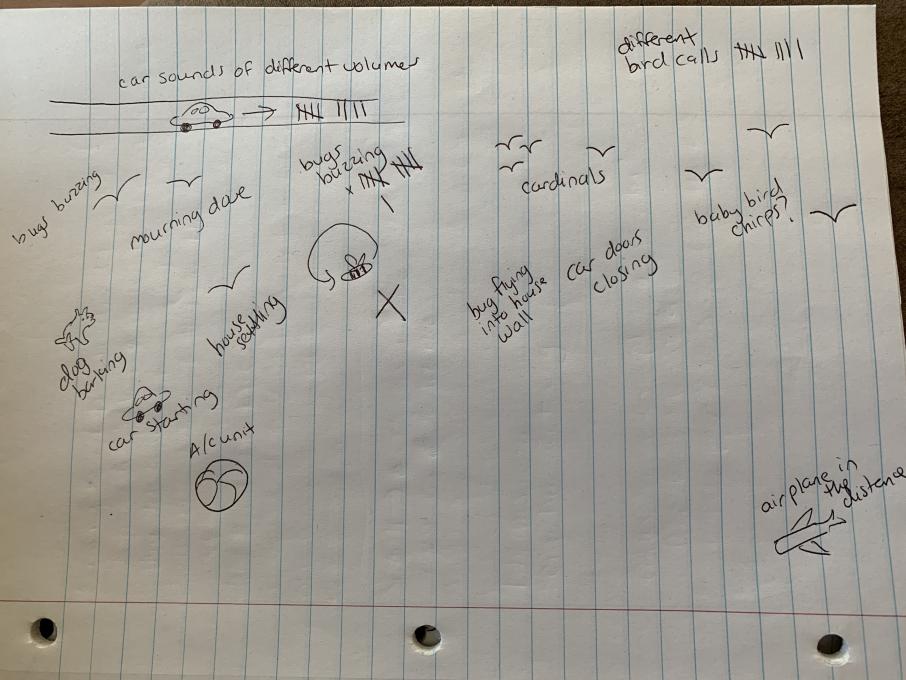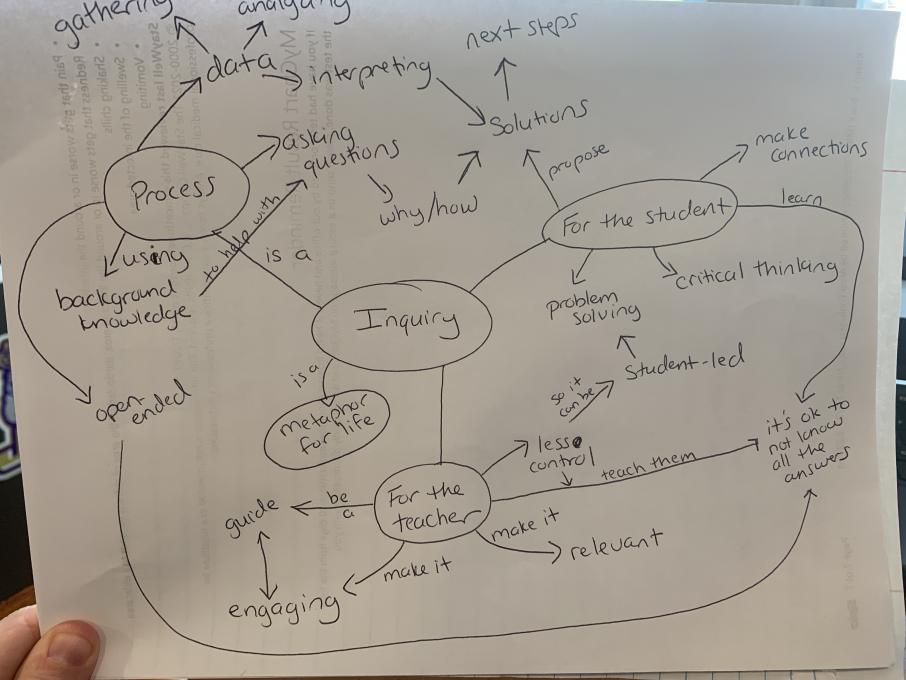Kristin
Forum Replies Created
-
KristinParticipantWe can be catalysts by modeling this concept of observe and wonder and by showing our enthusiasm for different types of observations and questions. We can also be that catalyst through our feedback, either orally or in written form. I start (almost) every class each day with a "What Do You Notice? What Do You Wonder?" prompt. I display a picture or video on my ViewSonic board (similar to a SmartBoard). The picture/video was always of something in the natural world. I created a digital document with three columns: one for the date, one for notices, and one for wonders. As kids came into my class, they were expected to open their Chromebooks (we are one-to-one) and complete their Notice/Wonder for the day. We then shared and discussed some of them as a class. I always praised and thanked those who are willing to share, especially if they made a connection in their notice/wonder to a topic we studied in class, provided a lot of detail in their recordings, when someone made a "not so obvious" observation, such as something they noticed in the background, or asked a complex or open-ended question. I'd also periodically provide private, written feedback on their document. It's fun to see their skills grow over the year.
-
KristinParticipantLike others have said, the most impactful thing is slowing down and focusing on what happens around us. We humans are normally very focused on what is going on with ourselves at a given time and it is easy to overlook what's happening in the natural world right outside our windows. I was familiar with the sound map activity prior to this course, and I did it with my students last year. I introduced the activity by reminding them that we focus so much on the things we can see when making observations that we forget our sense of hearing is an observation tool, and we can learn a lot just by listening. I encouraged them to use tally marks if they think they are hearing the same bird calling more than once, or make space to tally how many different types of bird calls they think they hear in our given time. I teach 7th grade, and I found that asking them to be silent while in a large group setting outside with their peers (25ish kids) is a challenge for them, even if they are spread out from each other. Because of that, I kept the "silent time" to no more than 3 minutes. I asked them not to intentionally try to make sounds during our observation time (no twig snapping, leaf crunching, etc.), that we wanted to hear what the birds, squirrels, and other animals living in that space would hear if we were not there. They were really good at respecting that ask, I was proud of them. :) I found that modeling this activity is SO important for them. Many had a hard time understanding that they are the "X" and how that relates to where they should try to put their sketches/words. I took a dry erase board outside with us and used that to demonstrate the activity. I think this really helped them not focus so much on "Am I doing this right?" and just enjoy the experience. When I do this again, I'd like to incorporate more reflection. Perhaps I will have them spend a few minutes studying their sound map and come up with a couple questions about what they heard.

-
KristinParticipantI think providing my students with an authentic learning experience like citizen science is exactly what is needed in my classroom. As I mentioned in another post, my school has a lot of outdoor/green space and while I have used it in previous years, I could be doing so much more with it. I can see us implementing a more structured citizen science project at the beginning of the year, and building upon that throughout the year with guided and/or open inquiry experiences. I also really like the approach of holding students accountable for their data and having a peer review system for that. It will add an additional sense of authenticity to the project.
-
KristinParticipantAll of these practices are good! If I had to pick one to focus on, I would say "frame the work globally and locally". This practice encourages us to meet kids "where they are at." I think it is important to focus locally because, depending on the project, the students can have an in-person, tangible experience with that organism or ecosystem. For the students who are somewhat indifferent about the environment or ecosystems, that real experience can sometimes be the hook for them to engage and take the project seriously. There's also a level of comfort when seeing something familiar. I like to expand those local connections with my students by focusing on something like migration. We might be observe a tree swallow here in the spring, but where does it go in the winter? How might what is going on in the ecosystem while it lives here affect how it completes its migration? What about the ecosystem where it migrates to? I also like to make our big world seem smaller, and those faraway, exotic places seem not so different. Comparing the organisms we observe in our local ecosystem to what is found in the same biome on another continent is always fun. You'll find many organisms that are quite similar.
-
KristinParticipantI am very fortunate to work at public middle school with a lot of greenspace on our property. This past year, I did a Tree Journal with my kids. We visited the same stand of trees 10 times throughout the year (5 times in the fall, 5 times in the spring), conducted observations and answered questions relating to topics we were learning in class. While out there, I would use my personal Smartphone and iNaturalist account to record things my students observed. My school has a "Project" within iNaturalist that some other staff and I post to. My biggest hurdle is wanting the students be the ones to record the observations in iNaturalist. Not everyone has a SmartPhone. Even if they do, we have to be careful about recommending certain apps for personal download. I tried to have them take pictures and upload them to school-issued Chromebook to then load to iNaturalist through the website, but there we ran into privacy and security issues with that too. Seek by iNaturalist is also a great tool as well, but I struggle with how to use it in class when not everyone has a SmartPhone. I think I could incorporate some of the GLOBE programs into the tree journaling activity. I will have to look more into that and see if I can create a "class account" that they can record observations to. Another challenge I have is that I teach 5 classes each day, with over 100 students. I'll have to get creative with my planning, as I'm guessing a lot of these projects don't want 5 kids/groups reporting the same thing each day. I would love to see how I can use eBird with my students or start a FeederWatch program! I'm on the third floor, so that complicates being able to set a feeder up we can observe from inside.
-
KristinParticipant
@Kate Thank you! One of the biggest lessons I've learned since making the career switch to teaching is that it is ok to say "I don't know, let's see if we can find out." :)
in reply to: Virtual Educator Retreat: Intro to Inquiry #824712 -
KristinParticipantLike some of the other responses, this lab activity is done at the beginning of the year. I've seen it called "Gummy Bear Osmosis" in other settings, but we don't discuss osmosis when doing this. I use this lab activity primarily to get an idea of the students' comfort level with identifying variables and sources of error, taking and recording measurements, how well they can work in a group, etc. I provide the question ("How will Gummy Bears react when placed in different liquids?"), the materials, and a chart to record their observations. I would say this lands somewhere between structured and guided inquiry, since there is a defined procedure, yet the kids are able to choose what types of liquids they want to investigate and what materials they will use for recording mass and length. Through this activity, the students carry out an investigation, analyze and interpret data, and explain their results. I could make this activity more solidly in the guided level by removing the step-by-step procedure and provided observation chart and give the students more freedom with their set up and how they measure the reaction. Maybe they would choose to observe changes in color or texture if they weren't told the specifically focus on mass and length. :) I also could incorporate more opportunities for sharing with their peers, rather than just turning in a lab report to me. These changes would provide them with more practice in planning investigations, interpreting data, and communicating information.
-
KristinParticipantAs a newer teacher (just finished my second year), I am still getting a sense of what inquiry means in a classroom. Teaching is my second career, and my memories of science class during my middle and high school years were a lot like what was described in the reading: lectures, step-by-step investigations with specific/planned outcomes, and correct answers provided rather than a more "I think" approach. Several of the responses in the reading about inquiry being a metaphor for life and how we explore the world through inquiry as young children really resonated with me. It seems like we get away from that as we grow, especially during today's digital age where almost anything can be "Googled." I think inquiry should challenge the learner to think critically beyond the easy answer they can look up and explore the how/why. Inquiry should help them connect to the world around them and possibly explore solutions to a problem. As the teacher, we need to shift our role to more of a guide during inquiry investigations and experiences and learn to let go of our control. Allowing our students to engage in inquiry means we will not always have the "right answer" for them, and that is ok!
 in reply to: Virtual Educator Retreat: Intro to Inquiry #824512
in reply to: Virtual Educator Retreat: Intro to Inquiry #824512

